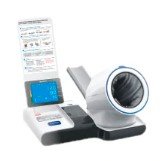Continuing Education Requirements for Phlebotomists in the United States: Stay Current and Advance Your Career
Summary
- Phlebotomists in the United States are required to complete Continuing Education credits regularly to maintain their certification.
- The number of required CE credits may vary based on the certifying agency and state Regulations.
- Continuing Education ensures that phlebotomists stay current with industry standards and advancements in the field.
Continuing Education Requirements for Phlebotomists in the United States
Phlebotomists play a crucial role in the healthcare system by collecting blood samples for diagnostic testing, transfusions, research, and blood donations. In the United States, phlebotomists are required to obtain certification to practice professionally. One of the essential components of maintaining certification as a phlebotomist is completing Continuing Education (CE) credits. Continuing Education helps phlebotomists stay current with industry standards, advancements in technology, and best practices in the field.
How often are phlebotomists required to complete Continuing Education credits?
The frequency of Continuing Education requirements for phlebotomists in the United States can vary based on the certifying agency and state Regulations. Typically, phlebotomists are required to renew their certification every one to three years. As part of the renewal process, phlebotomists must complete a certain number of Continuing Education credits.
Continuing Education requirements by certifying agencies
There are several certifying agencies in the United States that offer certification for phlebotomists, such as the American Society for Clinical Pathology (ASCP), National Healthcareer Association (NHA), and American Medical Technologists (AMT). Each certifying agency has its own set of requirements for Continuing Education credits.
- ASCP: Phlebotomists certified by ASCP are required to renew their certification every three years. They must complete 30 Continuing Education points within the three-year certification period. These points can be earned through a variety of activities, such as attending workshops, conferences, and webinars.
- NHA: The NHA requires phlebotomists to renew their certification every two years. Phlebotomists must complete 10 Continuing Education credits within the two-year renewal period. These credits can be earned through online courses, seminars, and other educational activities.
- AMT: Phlebotomists certified by AMT must renew their certification annually. They are required to complete 12 Continuing Education credits each year. Phlebotomists can earn these credits by attending AMT-approved conferences, completing online courses, and participating in other educational activities.
State Regulations for Continuing Education
In addition to certifying agencies' requirements, phlebotomists may also need to adhere to state Regulations regarding Continuing Education. Some states have specific requirements for the number of CE credits phlebotomists must complete to maintain their certification. Phlebotomists should be aware of their state's Regulations and ensure they meet the necessary CE requirements to avoid any lapses in certification.
Benefits of Continuing Education for phlebotomists
Continuing Education is essential for phlebotomists to stay current with the latest industry standards and advancements in the field. Some of the key benefits of Continuing Education for phlebotomists include:
- Professional development: Continuing Education helps phlebotomists enhance their skills, knowledge, and expertise in the field. It allows them to stay up-to-date with the latest techniques, equipment, and Regulations related to phlebotomy.
- Career advancement: Completing Continuing Education credits can open up opportunities for career advancement for phlebotomists. Employers may value phlebotomists who are committed to ongoing learning and professional development.
- Patient care: Continuing Education ensures that phlebotomists provide high-quality care to patients by staying informed of best practices and safety standards in phlebotomy. It helps phlebotomists deliver accurate and efficient blood collection services while prioritizing patient comfort and safety.
Conclusion
Continuing Education is a vital component of maintaining certification as a phlebotomist in the United States. Phlebotomists are required to complete a certain number of Continuing Education credits regularly to stay current with industry standards and advancements in the field. By engaging in Continuing Education, phlebotomists can enhance their skills, advance their careers, and provide high-quality care to patients.

Disclaimer: The content provided on this blog is for informational purposes only, reflecting the personal opinions and insights of the author(s) on the topics. The information provided should not be used for diagnosing or treating a health problem or disease, and those seeking personal medical advice should consult with a licensed physician. Always seek the advice of your doctor or other qualified health provider regarding a medical condition. Never disregard professional medical advice or delay in seeking it because of something you have read on this website. If you think you may have a medical emergency, call 911 or go to the nearest emergency room immediately. No physician-patient relationship is created by this web site or its use. No contributors to this web site make any representations, express or implied, with respect to the information provided herein or to its use. While we strive to share accurate and up-to-date information, we cannot guarantee the completeness, reliability, or accuracy of the content. The blog may also include links to external websites and resources for the convenience of our readers. Please note that linking to other sites does not imply endorsement of their content, practices, or services by us. Readers should use their discretion and judgment while exploring any external links and resources mentioned on this blog.
